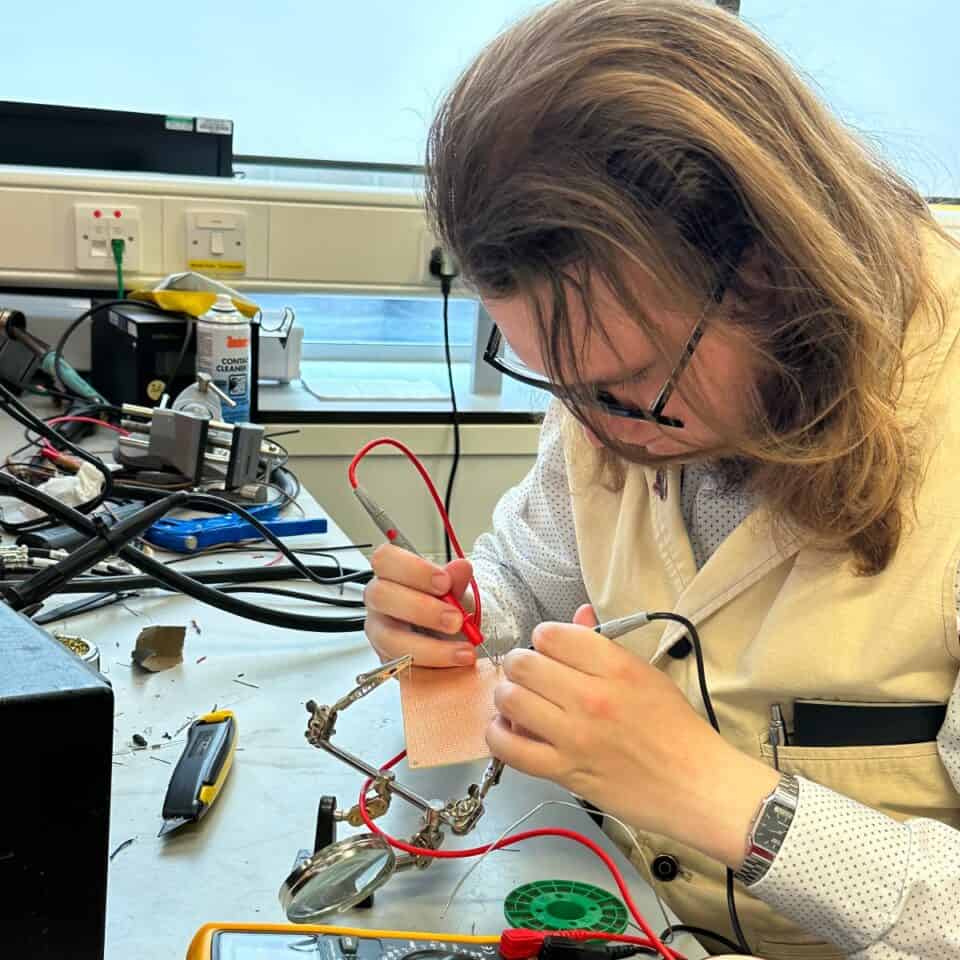Inventors : Eleni Papafilippou, Melissa Watt and Robert Petrie, Centre for Doctoral Training in Sensor Technologies for a Healthy and Sustainable Future, Department of Chemical Engineering & Biotechnology, University of Cambridge
Website : LiFETIME
The global market for electric vehicles (EVs) is growing exponentially. While this will reduce CO2 emissions and help address climate change, it is putting pressure on the global supply of critical minerals needed for EV batteries, such as lithium, and is already generating a large amount of toxic waste in landfills. Presently less than 5% of the world’s lithium-ion batteries are recycled, and even less are reused or repurposed. This is extraordinarily wasteful: batteries are unsuitable for EVs once they have fallen below 80% capacity, but still meet the standards for less demanding applications like energy storage between 30% and 80% capacity. In order to assemble effective second-life batteries, however, it is necessary to be able to measure the state-of-health (SoH) of each cell – presently a costly process to do accurately.
To address this block and make the cell-testing process accessible to small businesses working in the circular economy sector in low- and middle-income countries, LiFETIME is developing a low-cost, open-source solution for cell health testing for second life battery applications. Evolved as a team project of the 2022 MRes cohort of the Sensor CDT, LiFETIME aims to facilitate battery reuse and re-purposing by developing accessible and reliable technology for SoH determination.

The unique value proposition of LiFETIME’s solution is providing a low-cost, accessible technology to group cells with similar capacities together. Grouping cells with similar SoHs is the key to building efficient second life packs, as one weak cell will compromise the entire battery’s performance. Based on LiFETIME’s framework for SoH determination, cells are grouped into different bands within 5% charge capacity of each other.
As their system was designed in response to needs outlined by collaborators in Kenya, LiFETIME knows that their technology is suitable for use in the East African context. However, LiFETIME would like to understand whether their technology is of interest to small businesses operating in other low- and middle-income countries across the world. Could their system be leveraged and further developed to accelerate the growth of a sustainable second-life battery industry in other regions? If so, how might the technology need to be changed? What additional constraints might block its use in different socio-economic contexts and regulatory environments, and how might these be addressed? Who are the key business, research, regulatory and consumer stakeholders likely to take action and capture the value of second-life battery packs?
Coming at a critical time in LiFETIME’s evolution, feedback from the i-team will shape development of their technology and influence the project’s strategy going forward.

